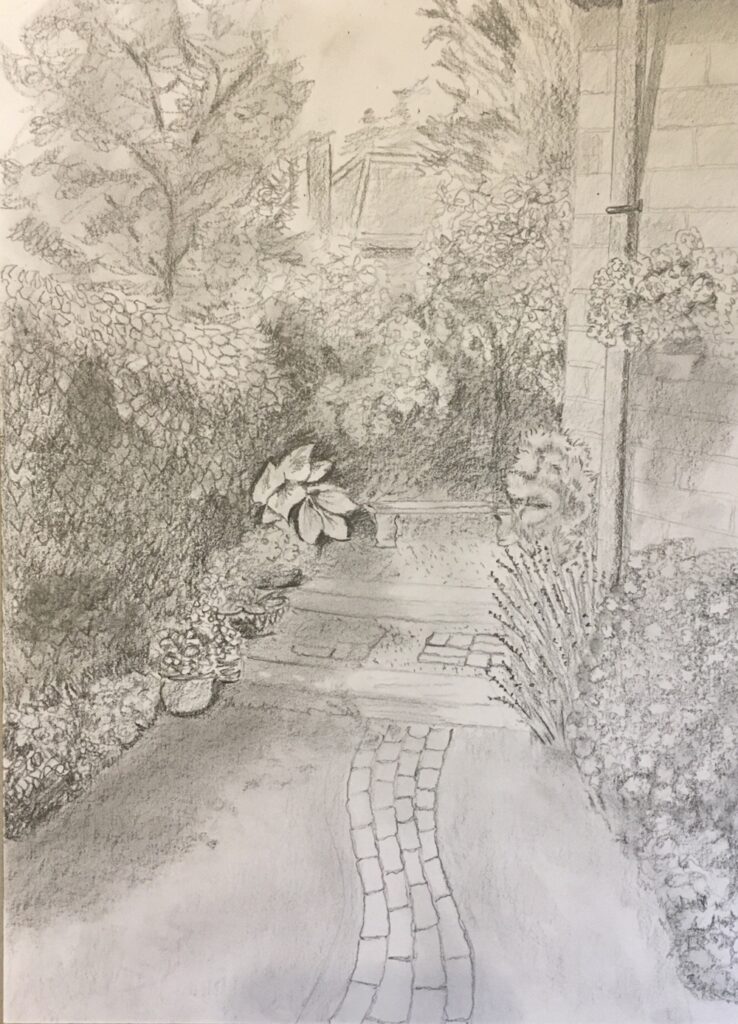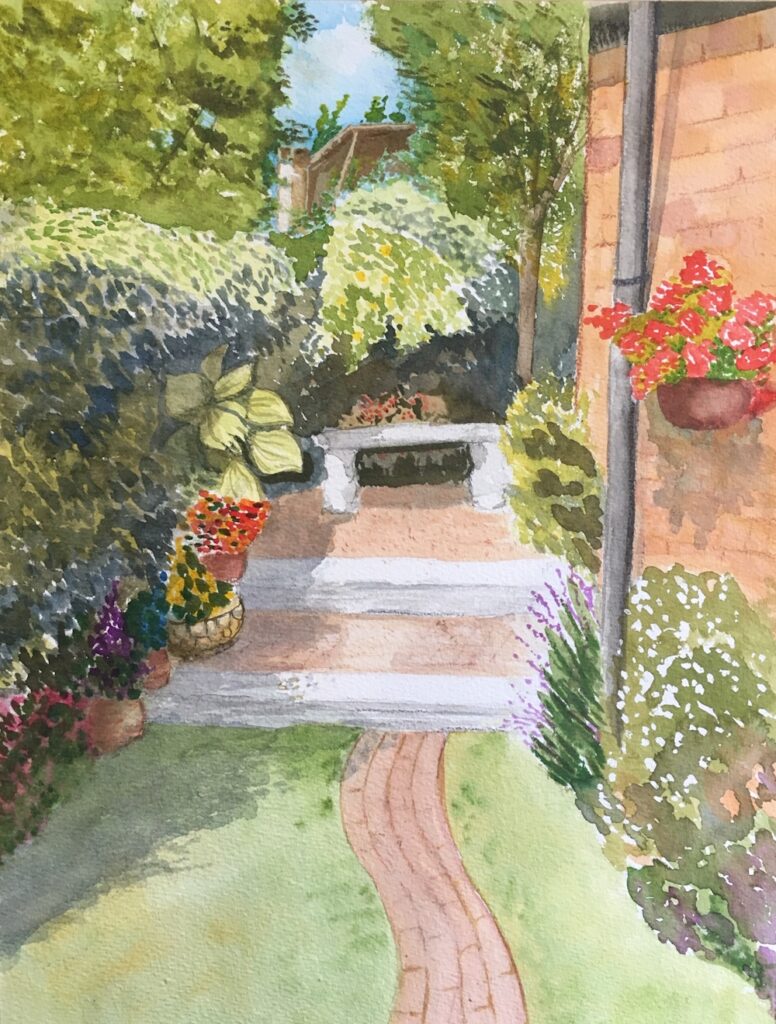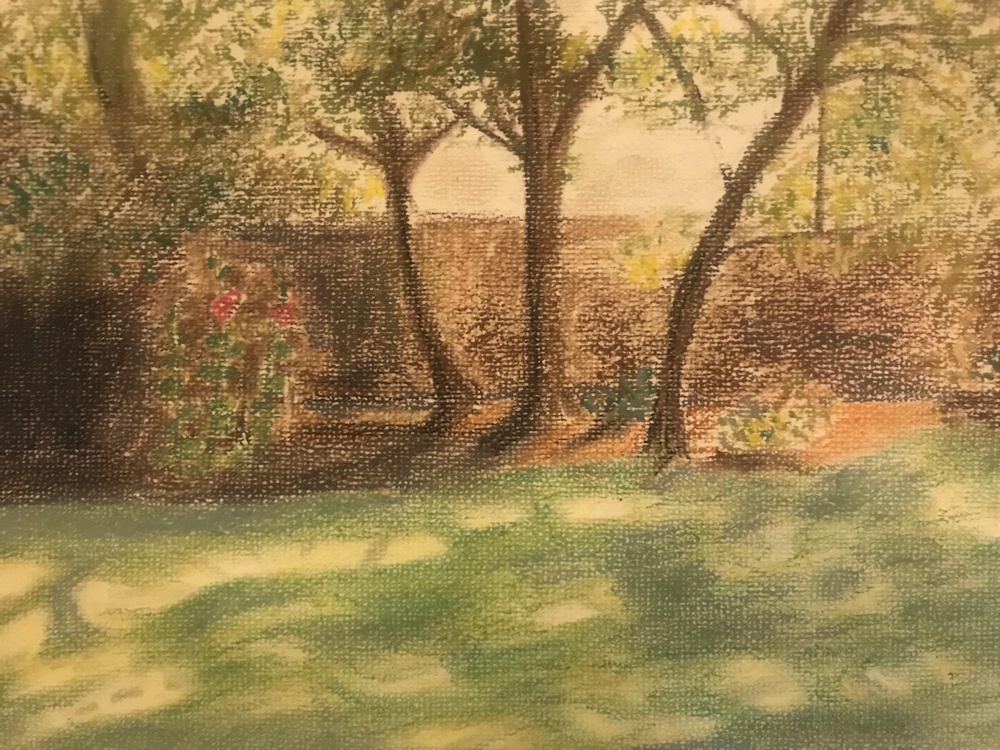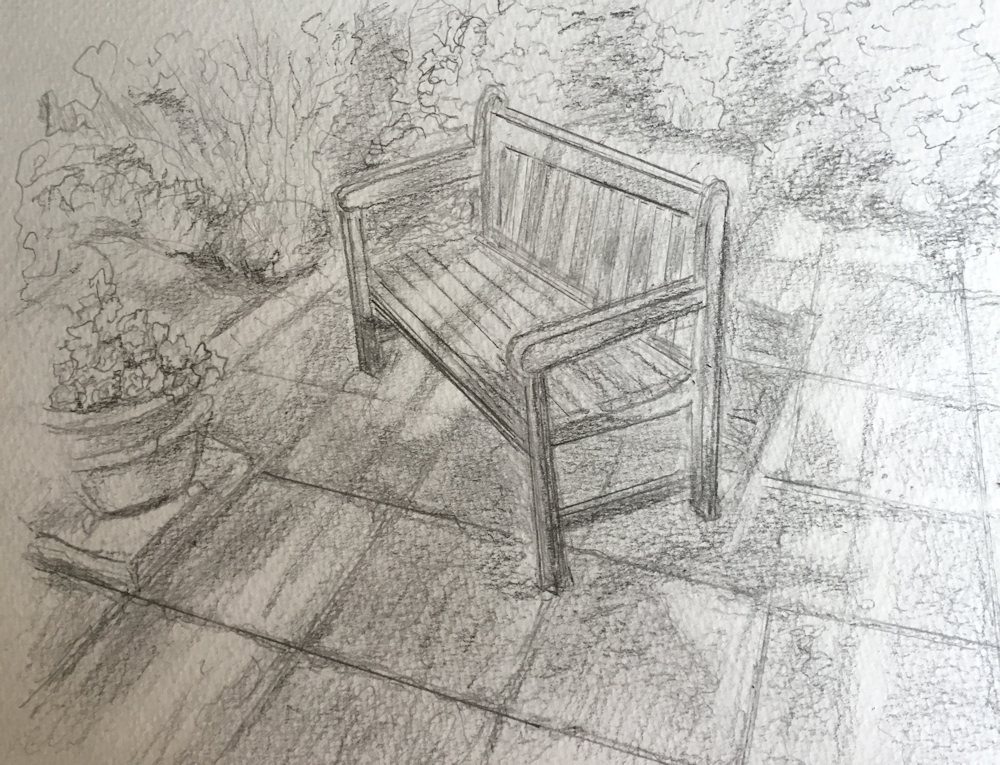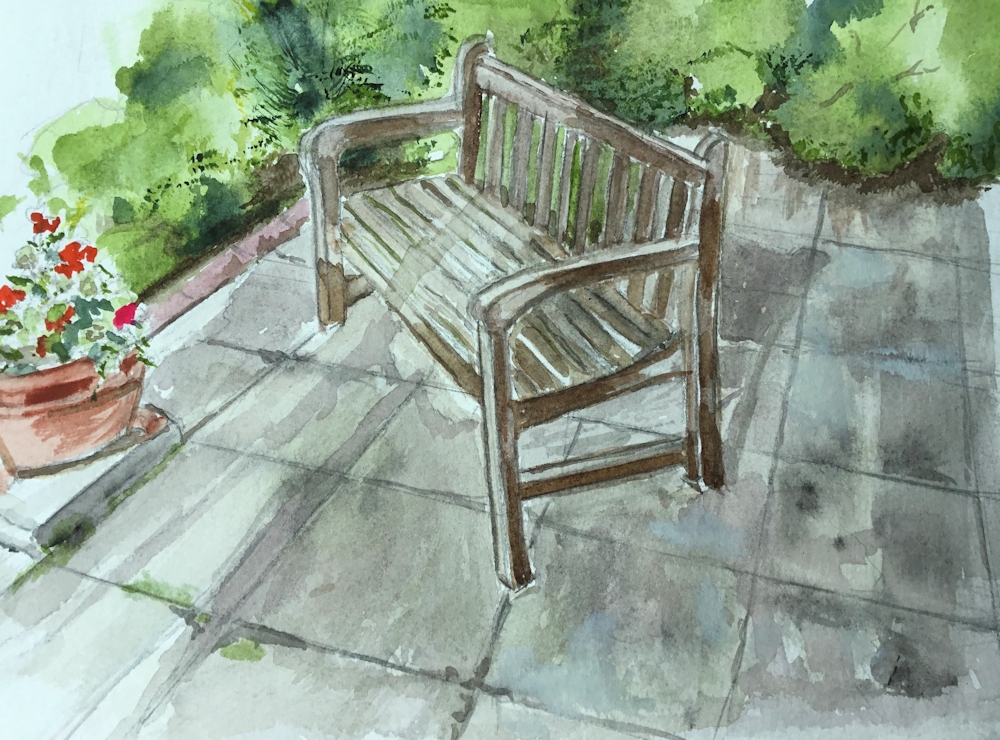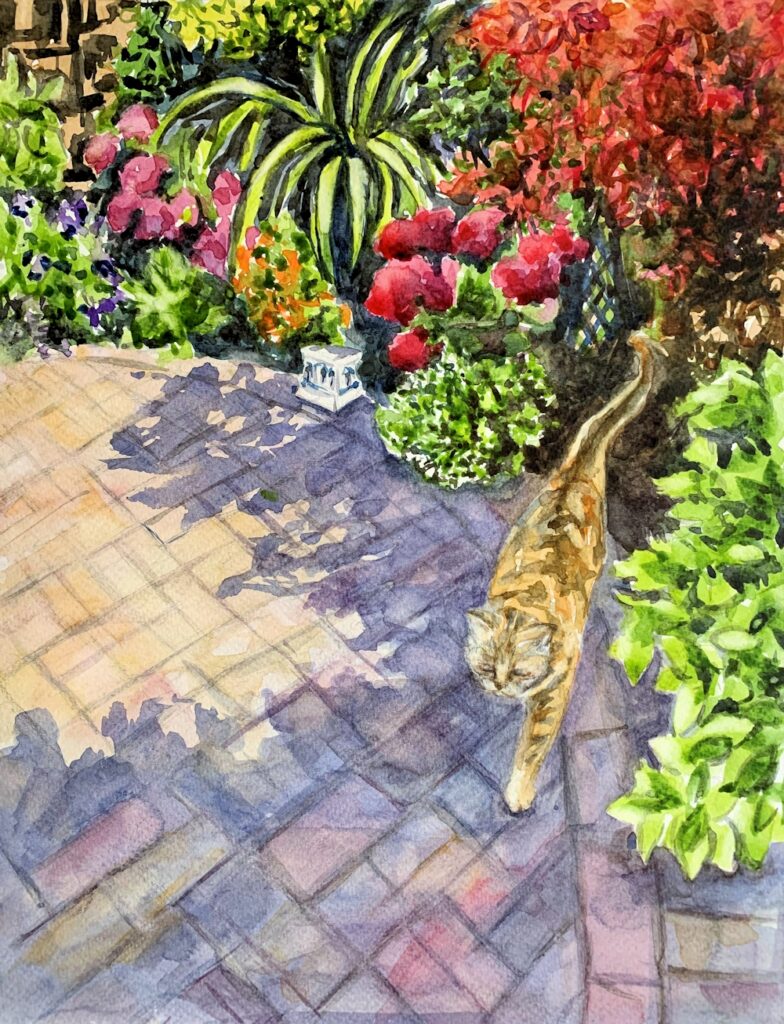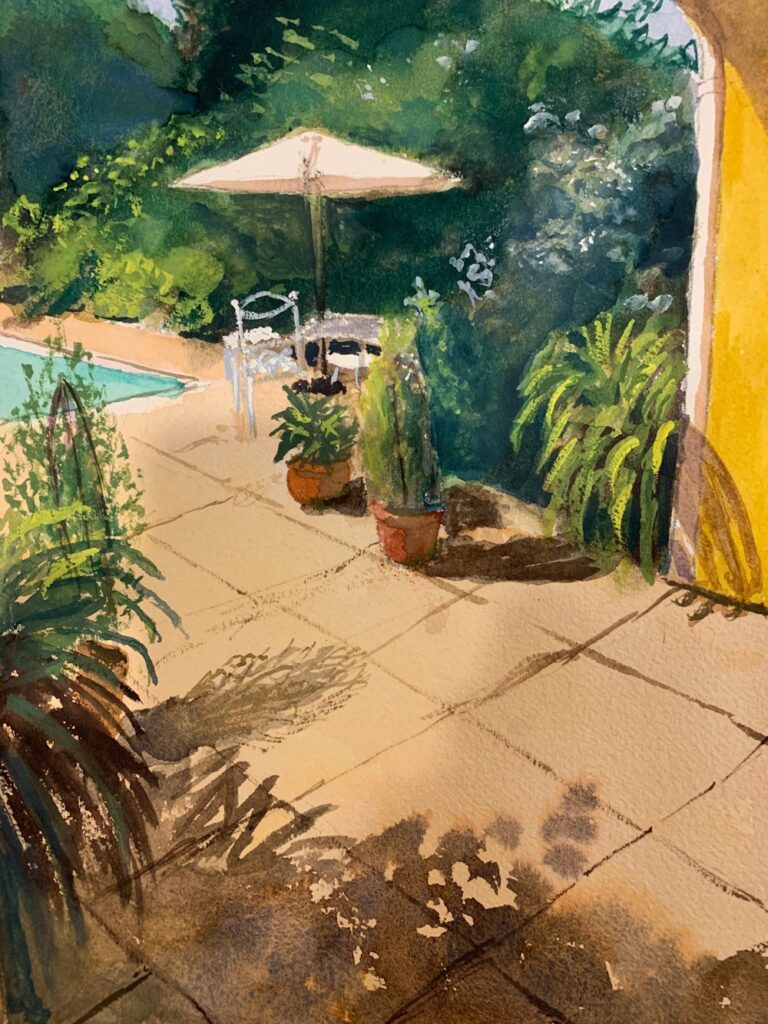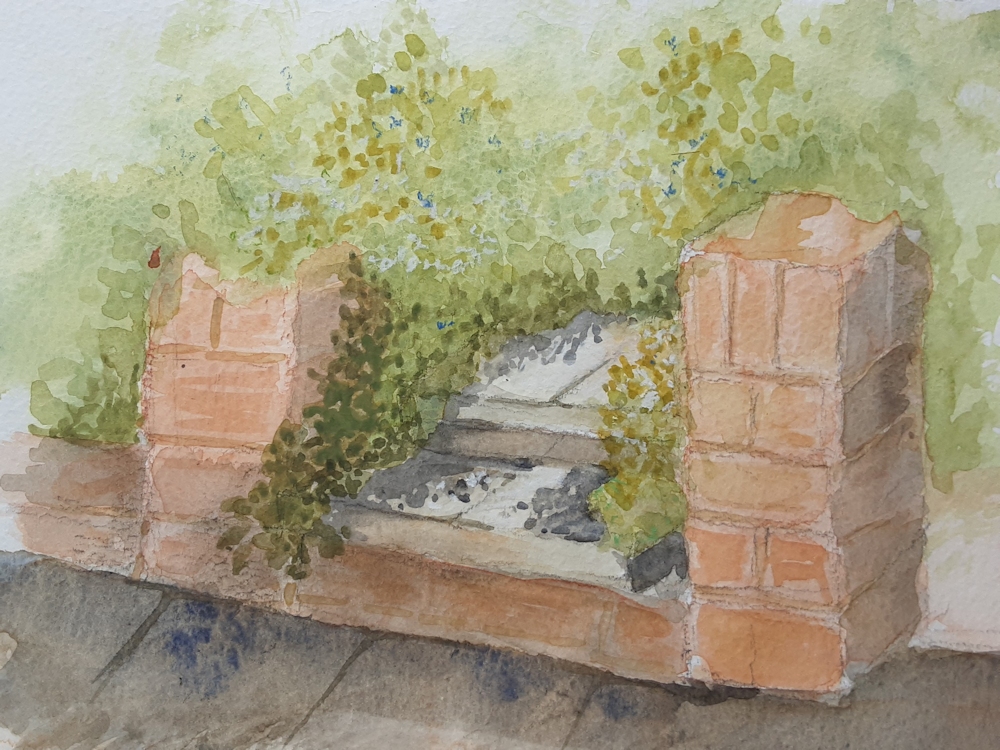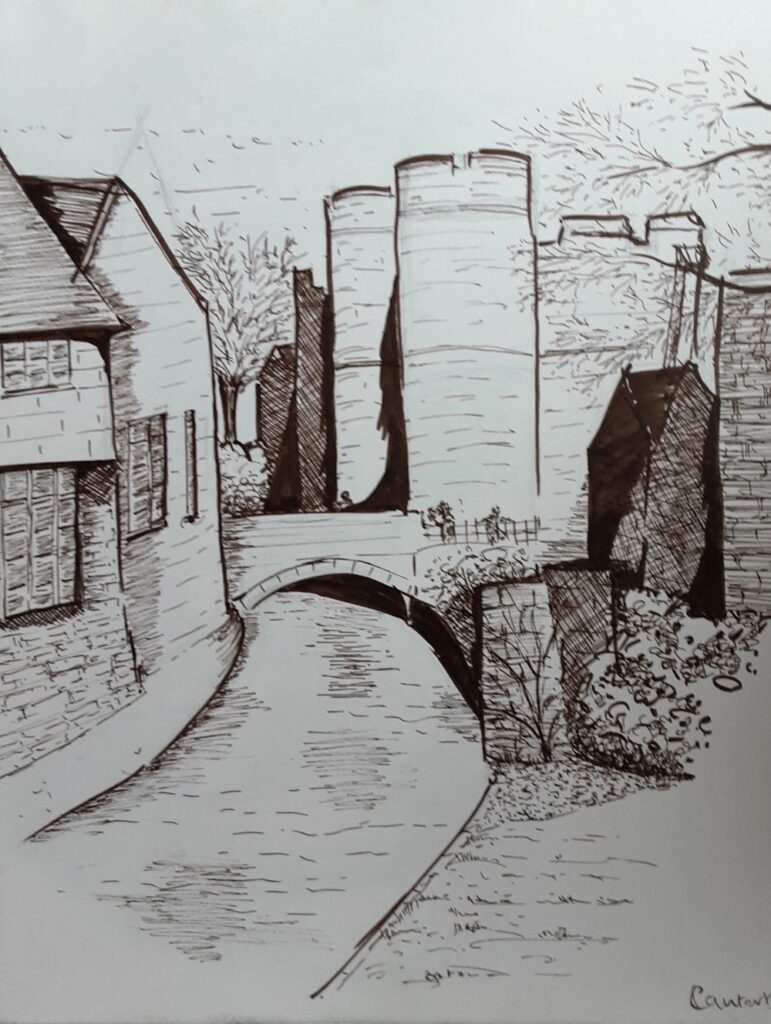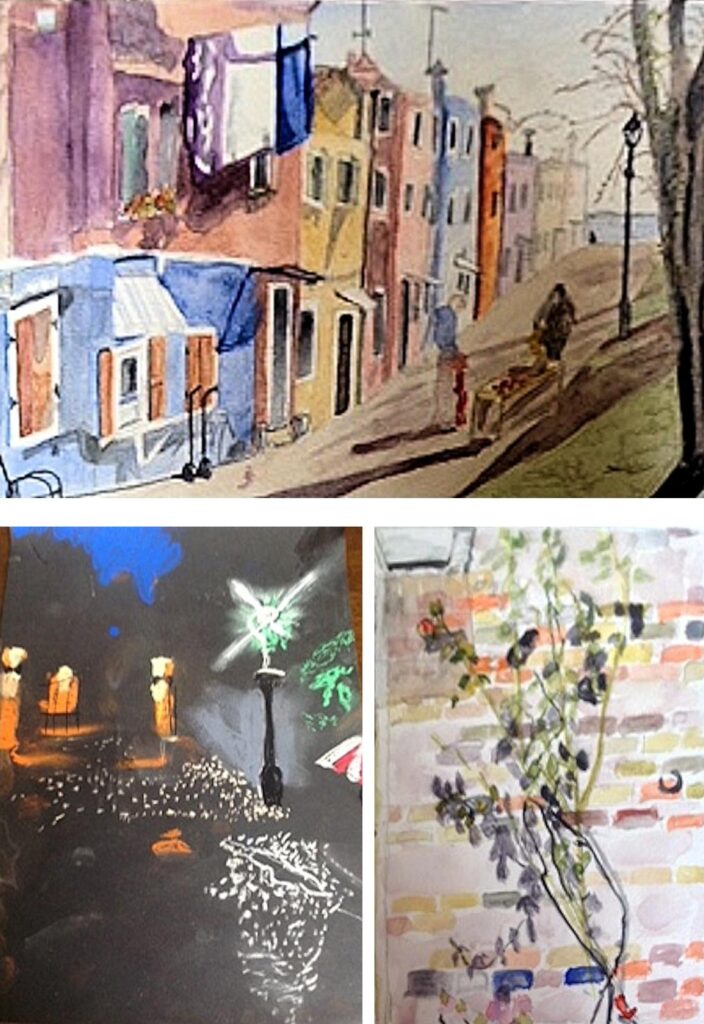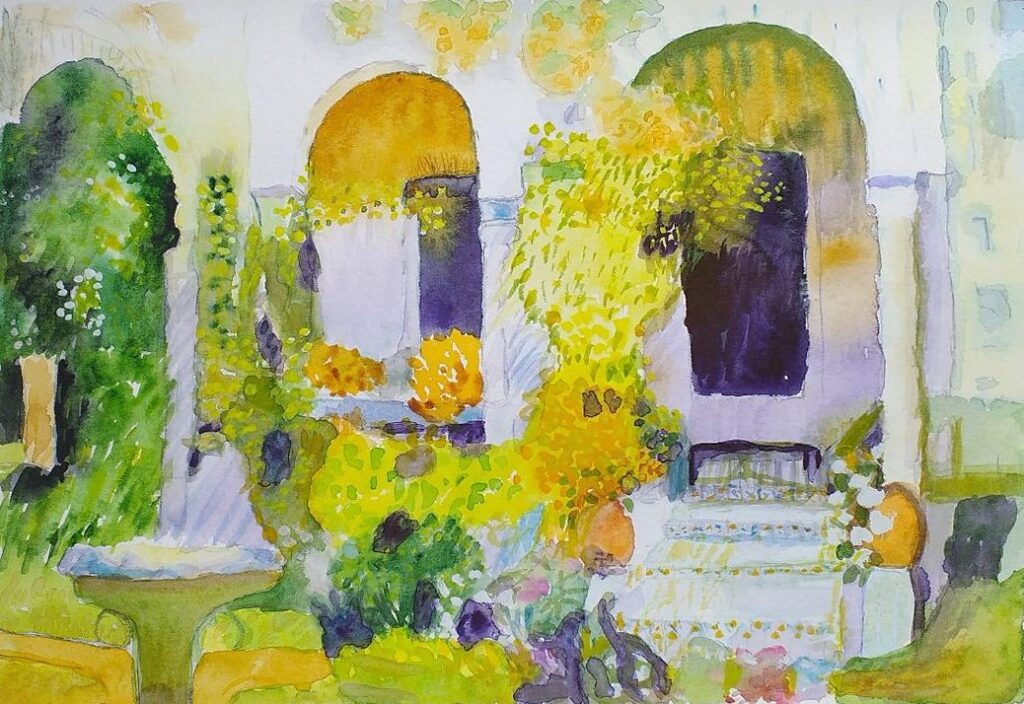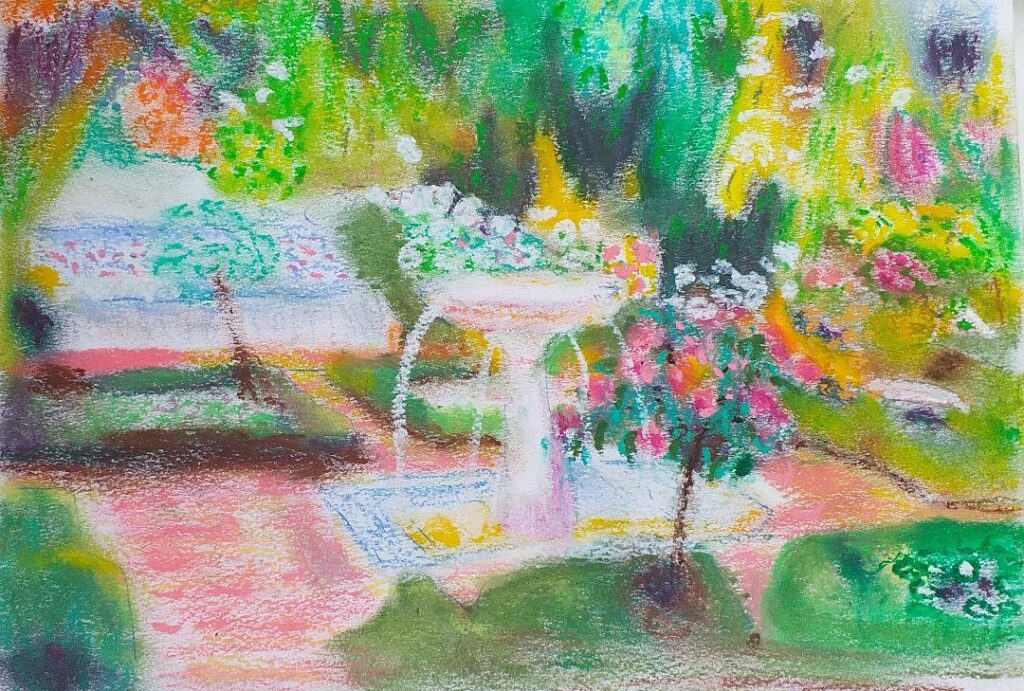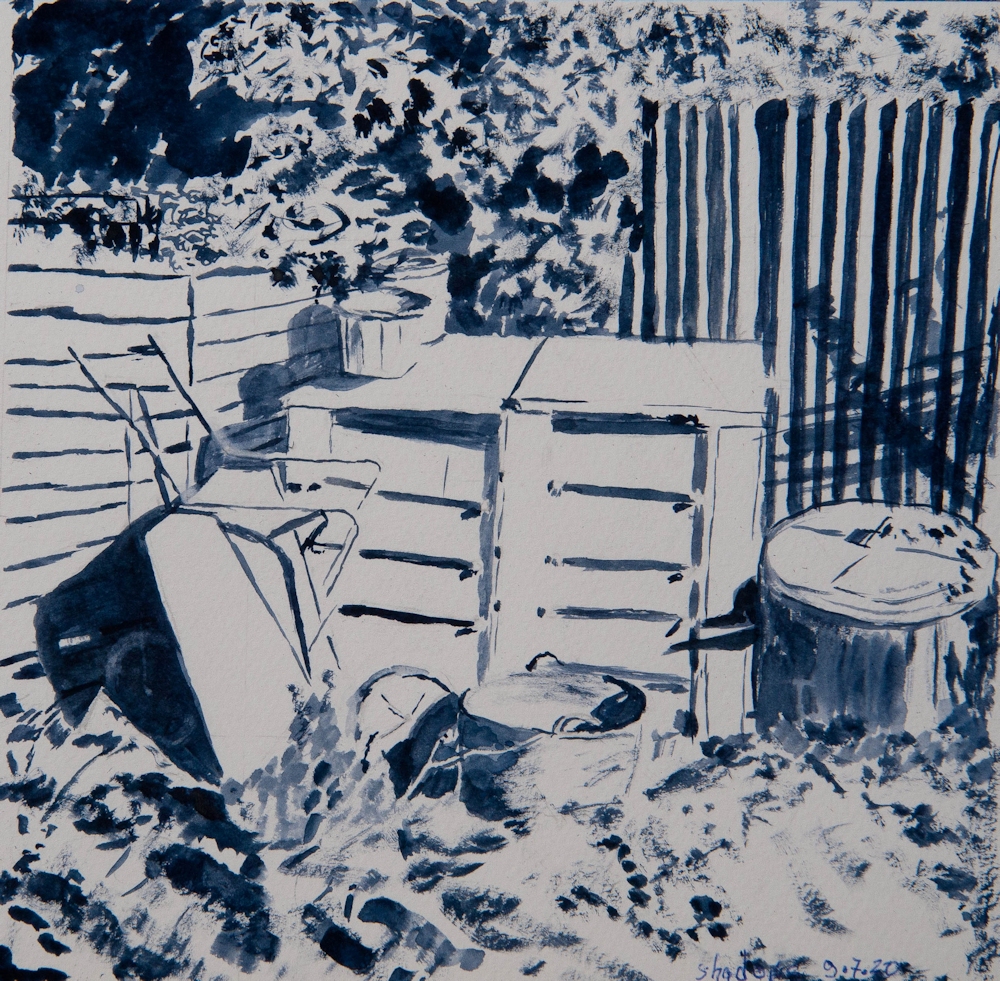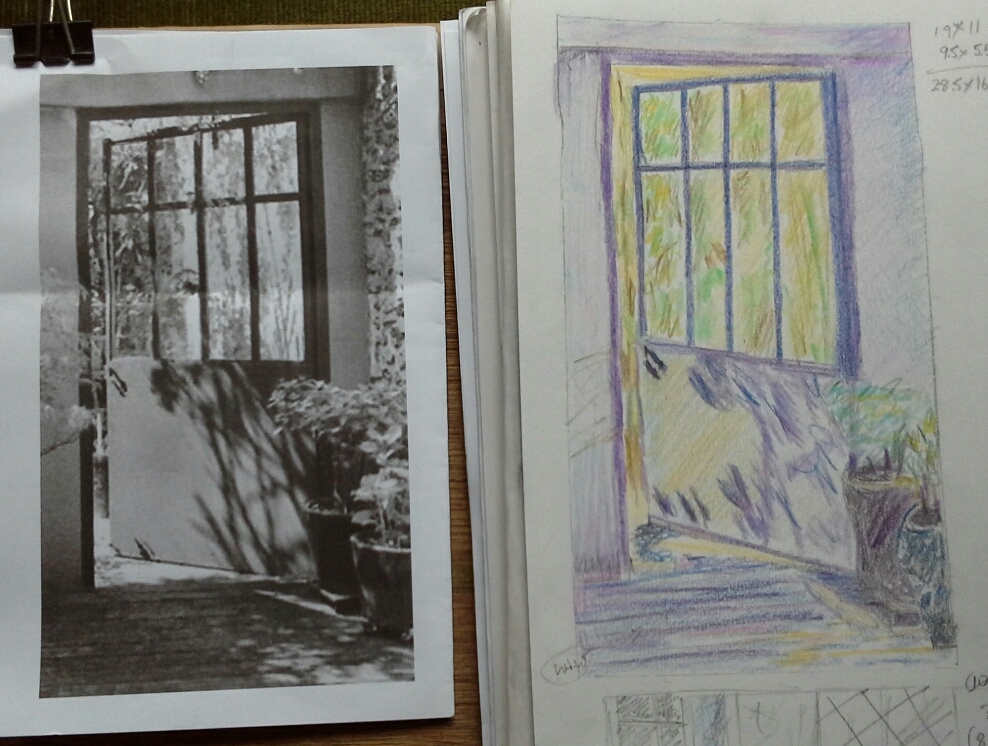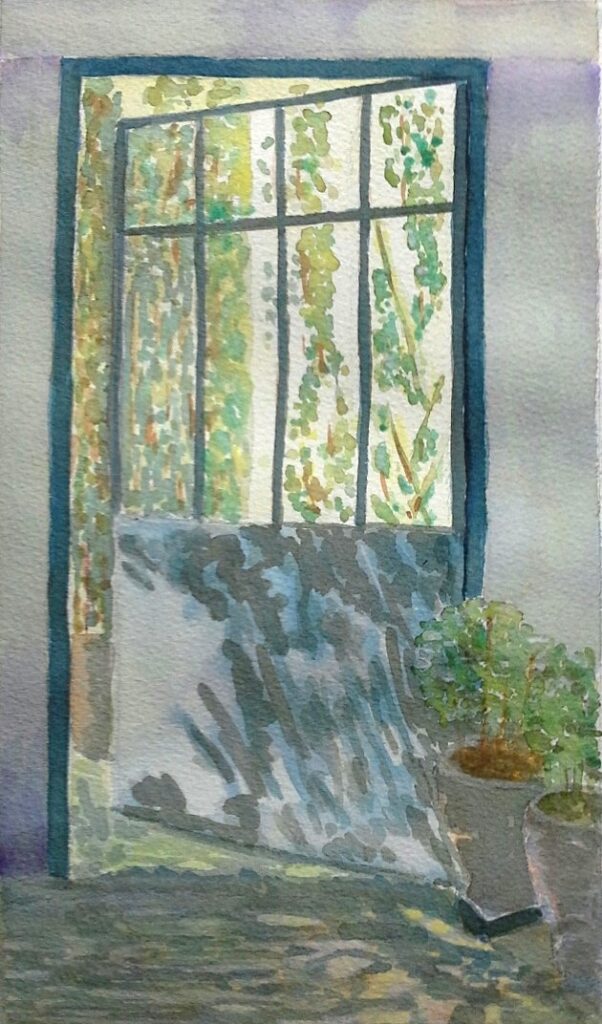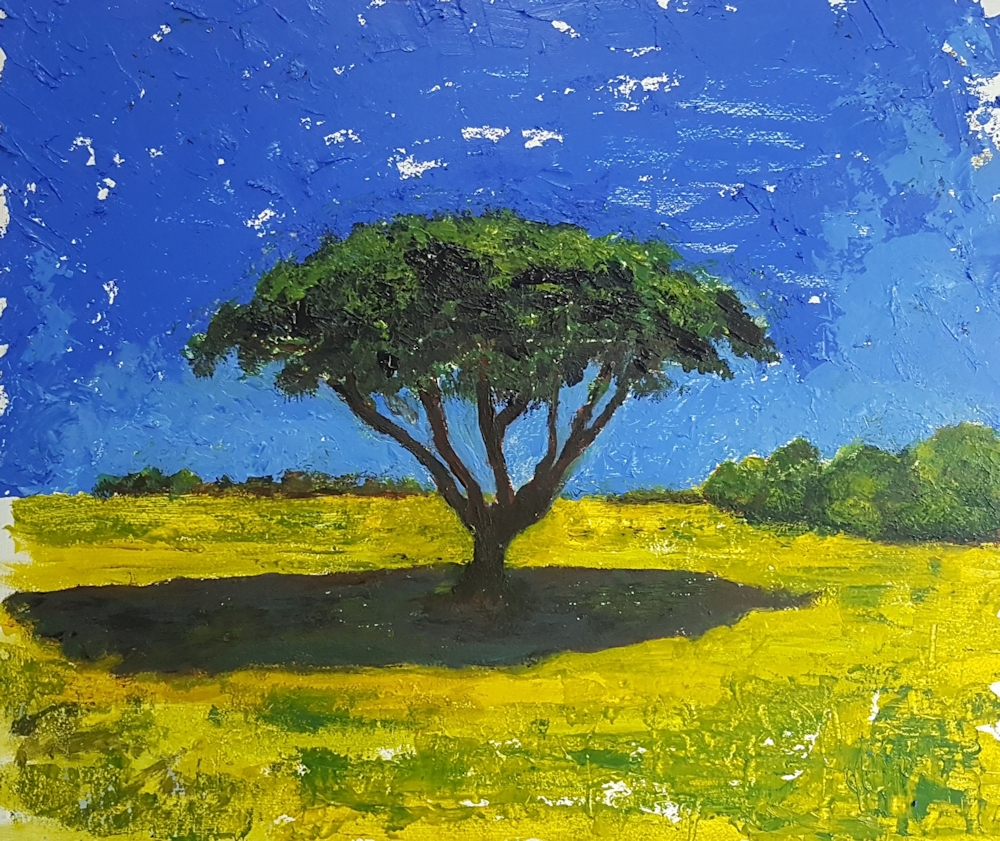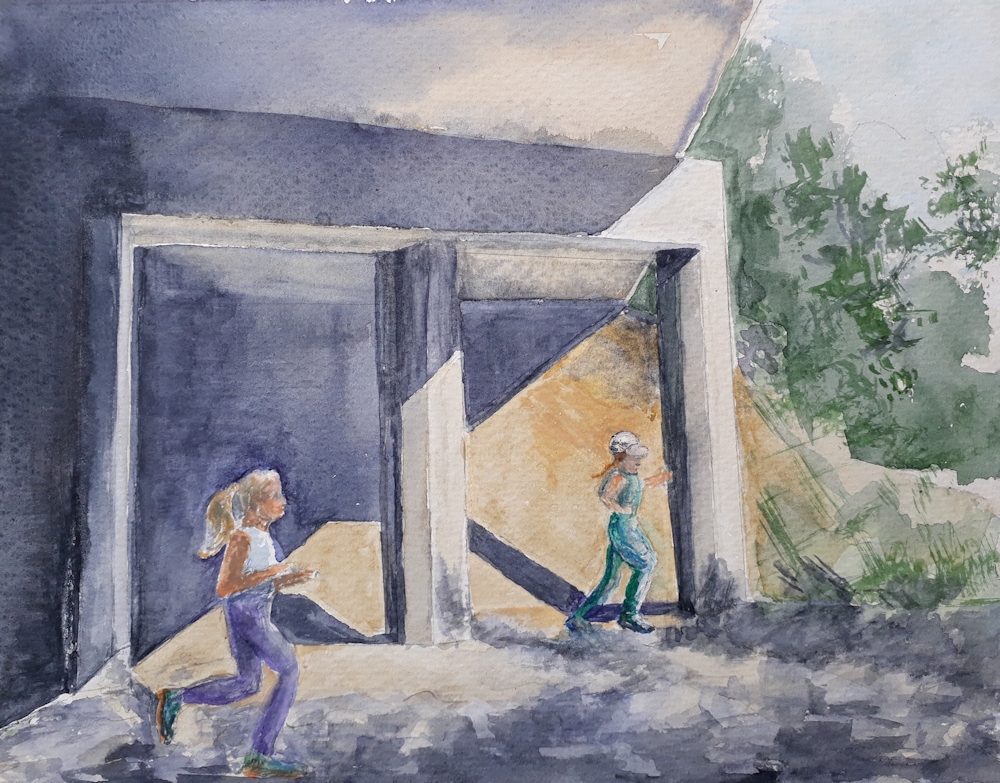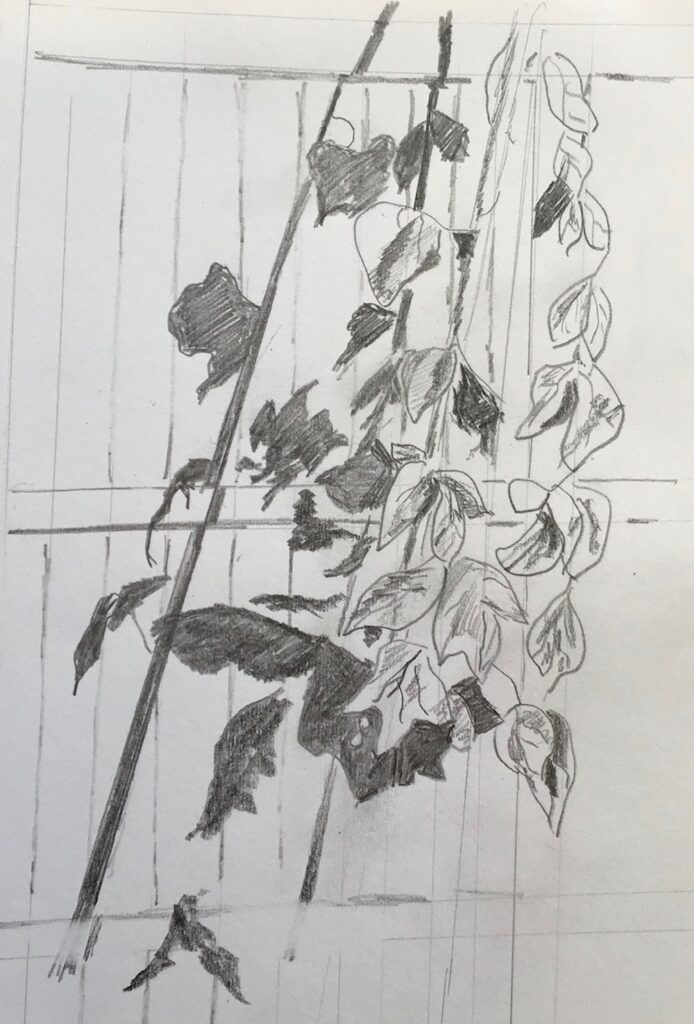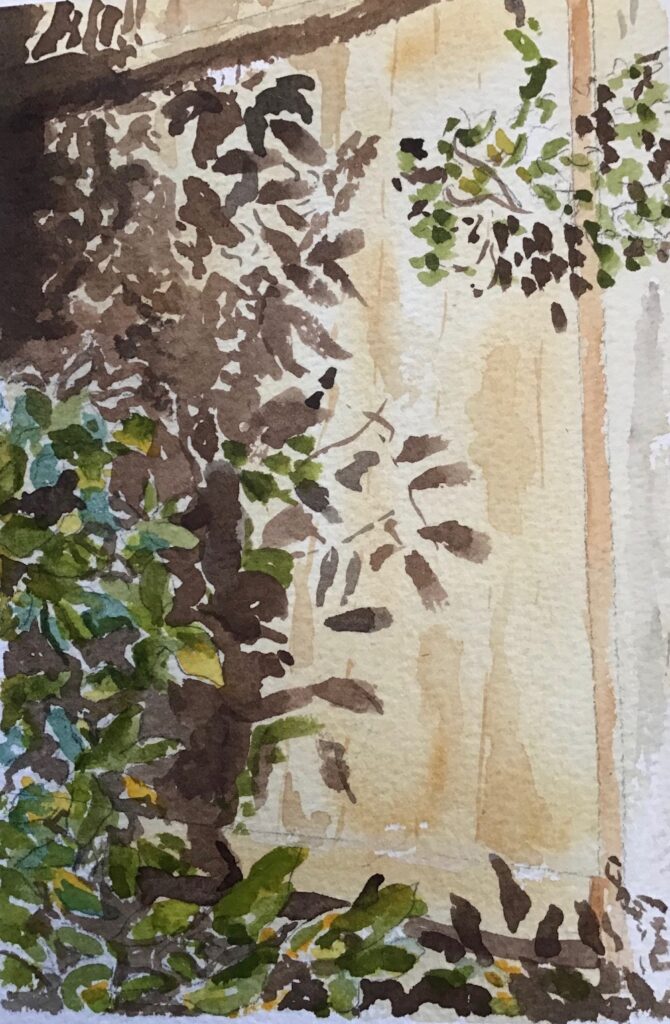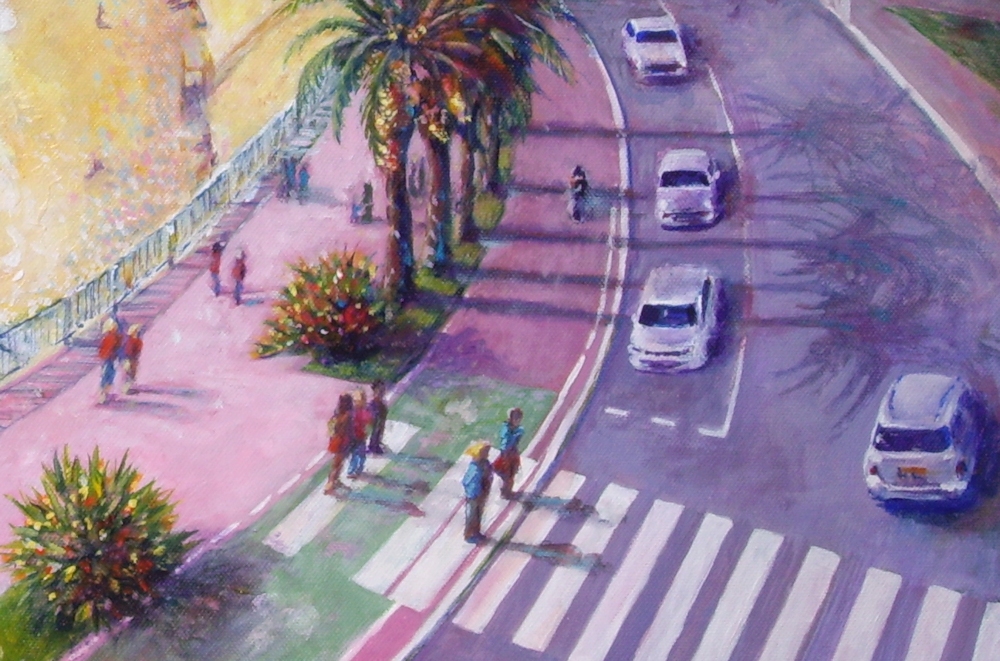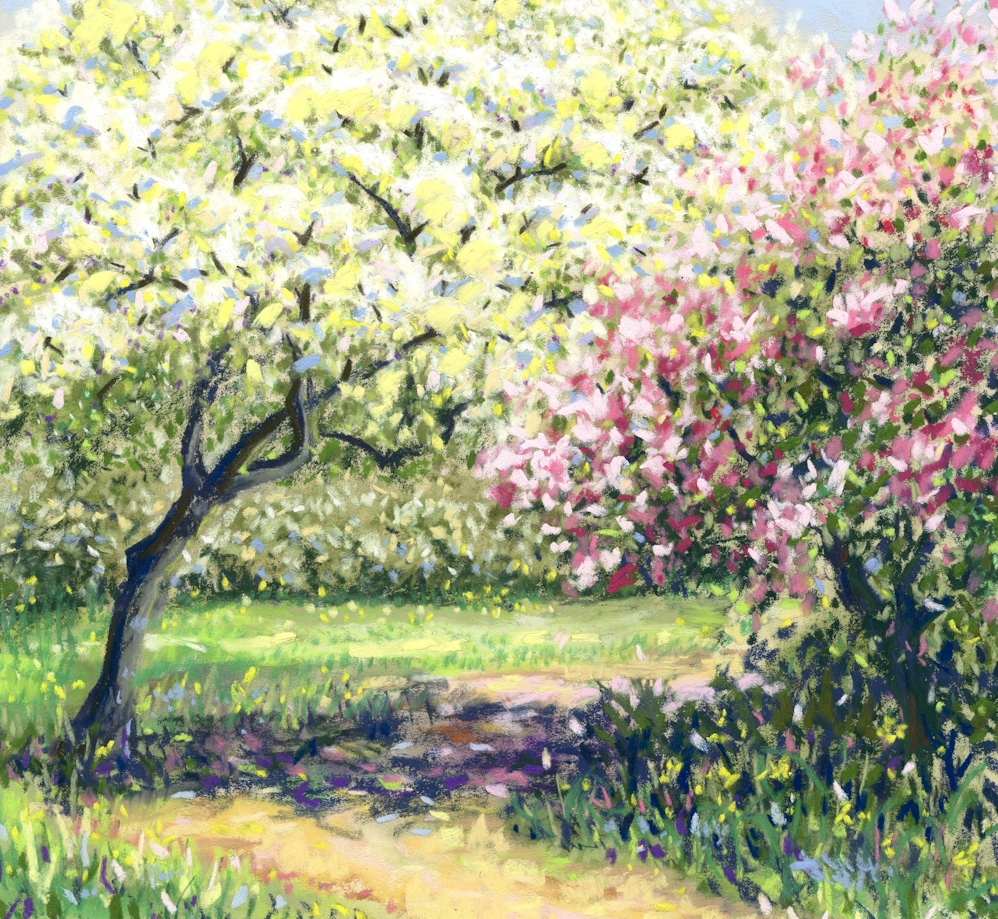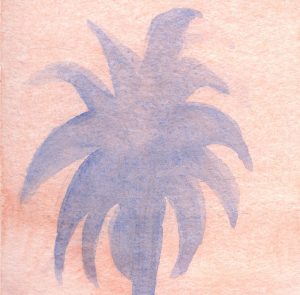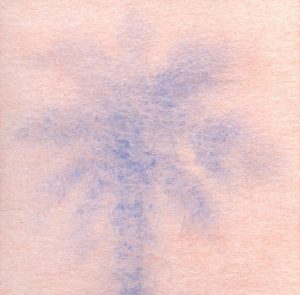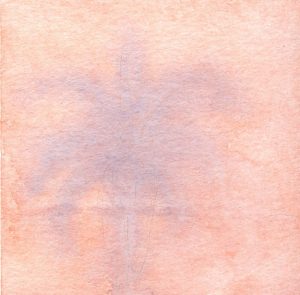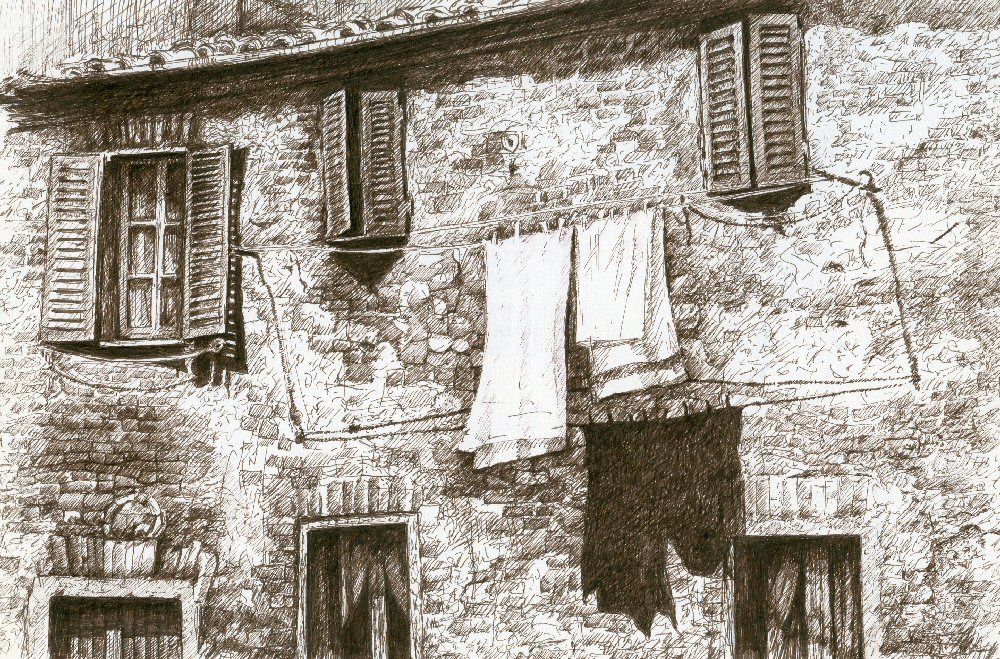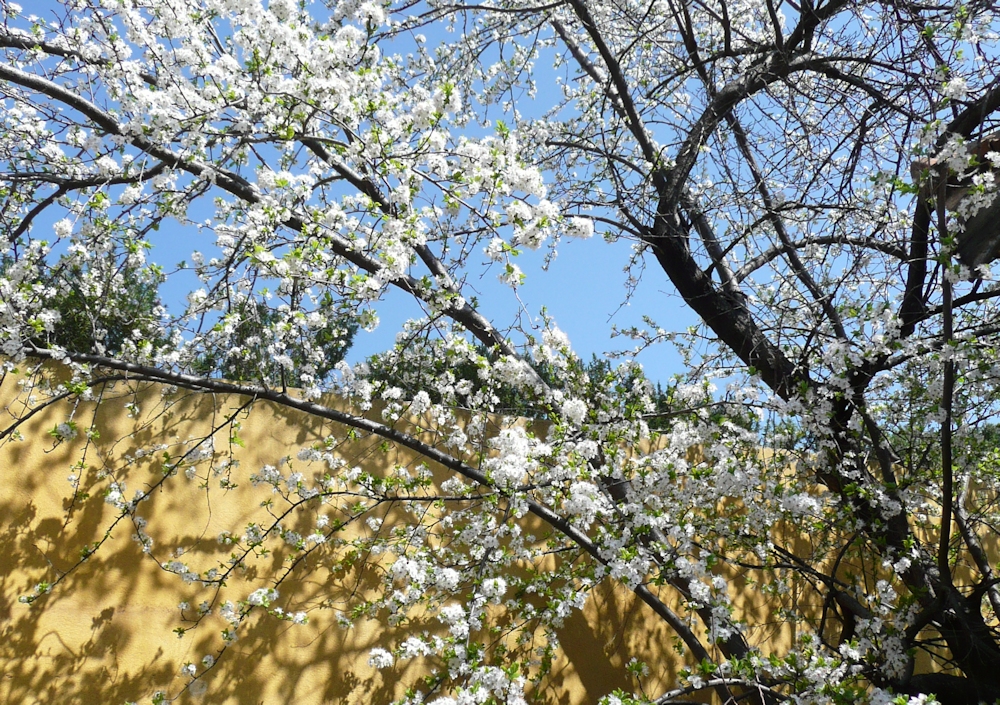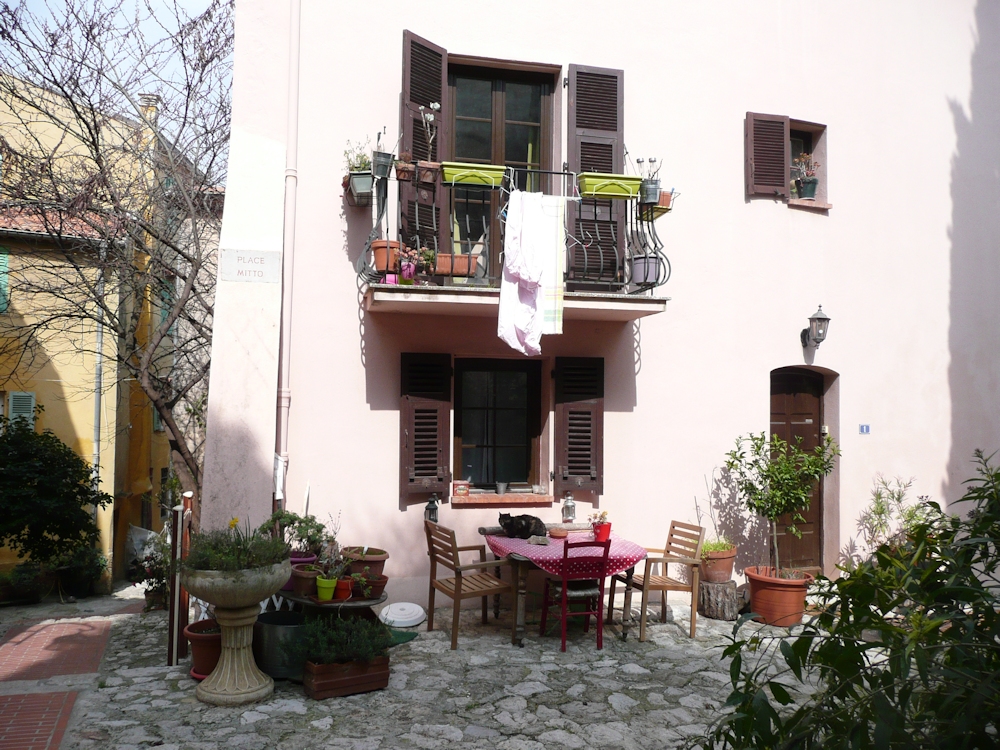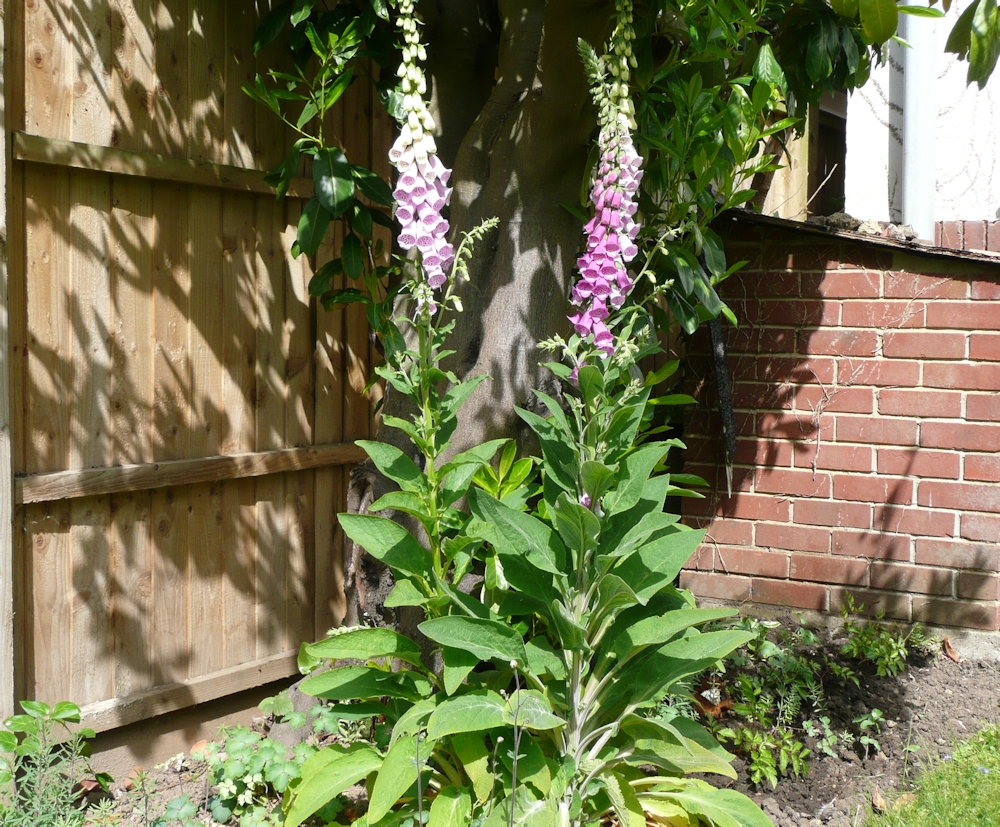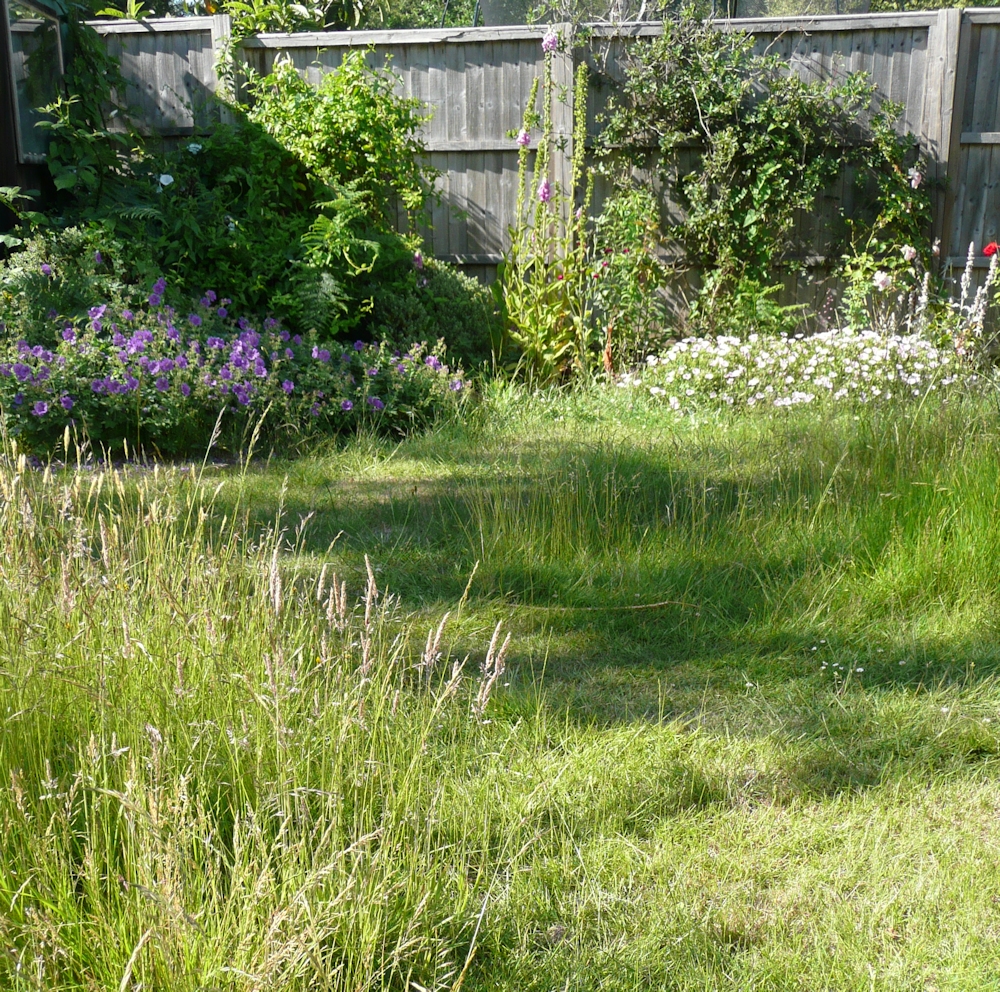Cast Shadows 3 Moving Outside
July 4, 2020
This week we move outside into the sunlight, a world of colour and tone still governed by the principles of physics. The sun is far enough away that light falling on objects is pretty much from one direction but the angle of the sun in relation to the object determines its length so we have short shadows midday and long shadows morning and evening. Even by moonlight the distortions that occur due to a one point light source near the object do not occur. However as you will see from the works of Matthew Lewis this is very different where night time lighting is from a street lamp or multiple sources.
It would be good to look at subjects where shadows are cast against the ground or a wall and this gives scope for garden, countryside or urban settings. All the artists referenced have been added to my Cast Shadows Pinterest Board https://www.pinterest.co.uk/jhall1282/cast-shadows/
What we will look at in some detail is the difference between soft and hard shadows and ways to depict them. The first reference artist I have chosen is Renoir, in particular two paintings. The first is “ Women in a Garden” about 1876, where a garden path with bright flowers on the left leads to two figures, one with a white parasol. The foreground is taken up with the dappled shadows of a tree we cannot see and on one side of the path is the cast shadow from a paling fence on the right. Note the deeper tones of the shadows nearer to the viewer and the paler more blue shadow cast by the fence as it follows the path in the middle distance. The foreground shadow has hints of the flower colours in the broken colour technique used and this could easily be emulated in pastel. If you have a similarly shaded path it would make an excellent project for this week’s challenge.
If you are working in pastel experiment with different hues to make broken colour shadows.
The second painting is “The Jardin d’Essai, Algiers” painted in 1881. The intricate pattern of palm foliage is echoed by their cast shadows on the ground. Note the blue and purple colours in the shadows and their soft edges.
One of the most beautiful examples of soft and harder shadows in watercolour is a work called “Corfu: Lights and Shadows” painted in 1909 by John Singer Sargent and a great mix of watercolour applied both wet in wet and wet on dry. If you have a wall on which a tree or shrub casts its shadow try and use similar techniques.
If you are working in watercolour it may be a good exercise to try painting shadows in the following ways, remembering that you may need more than one technique to produce your finished work. I have used some cobalt blue and a mix of scarlet vermilion and light red for my demonstration but you will have to find the combination of colours that works for your subject. Start by mixing a large quantity of the two mixes you are going to experiment with. Then divide some paper into four small squares.
Square 1 wet on dry, shadow colour first
Paint a shadow shape in a cool blue or blue/purple. Leave to dry.
Paint a wash of ochre or a reddish colour over the whole square
Square 2 wet on dry, background colour first
Paint a wash of ochre or a reddish colour over the whole square.
Leave to dry then paint the shadow over the first wash.
Square 3 wet in wet and wet on dry
Moisten the whole square with a sponge and paint the shadow while the paper is still wet.
Leave to dry then add the background wash over the whole square.
Square 4 wet on dry and wet in wet
Paint the whole square with a wash of background colour. Leave to dry.
Moisten the whole square lightly by dabbing not stroking with a sponge and paint the shadow while the paper is still wet.
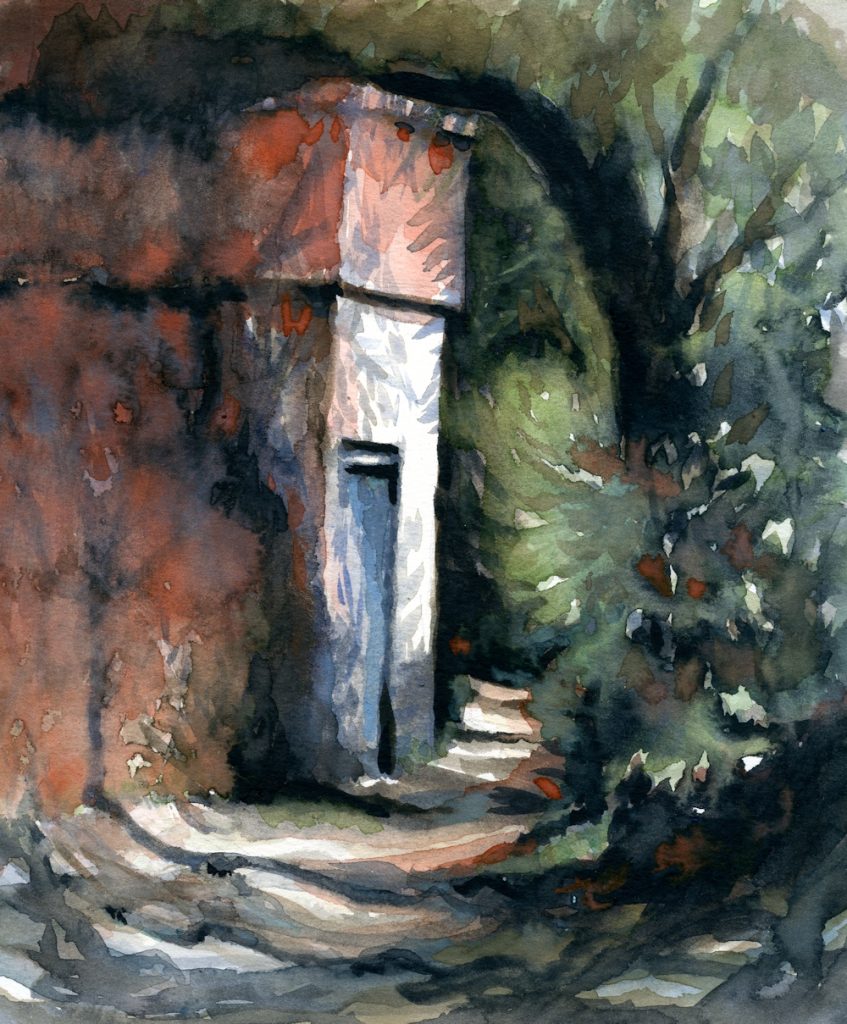
Shady Lane on the Edge of Oumesnat, Morocco: watercolour by Jo: Note wet in wet and wet on dry technique in shadow areas.
Two other artists referenced this week are;
Matthew Lewis who taught Edward Hopper. His night scenes of urban exteriors and interiors have an intense eerie drama and surely influenced Hopper.
and
Andrew Macara: I have added his work just for the sheer exuberance of colour and joy it brings. The shadows are painted in quite a flat way with the emphasis on shape and composition. Do look at how carefully Macara has chosen the colours for the shadows in each painting and how these relate to climate.
Lastly here are a few photographs illustrating the kinds of subject matter suitable for this week.
Your paintings:
